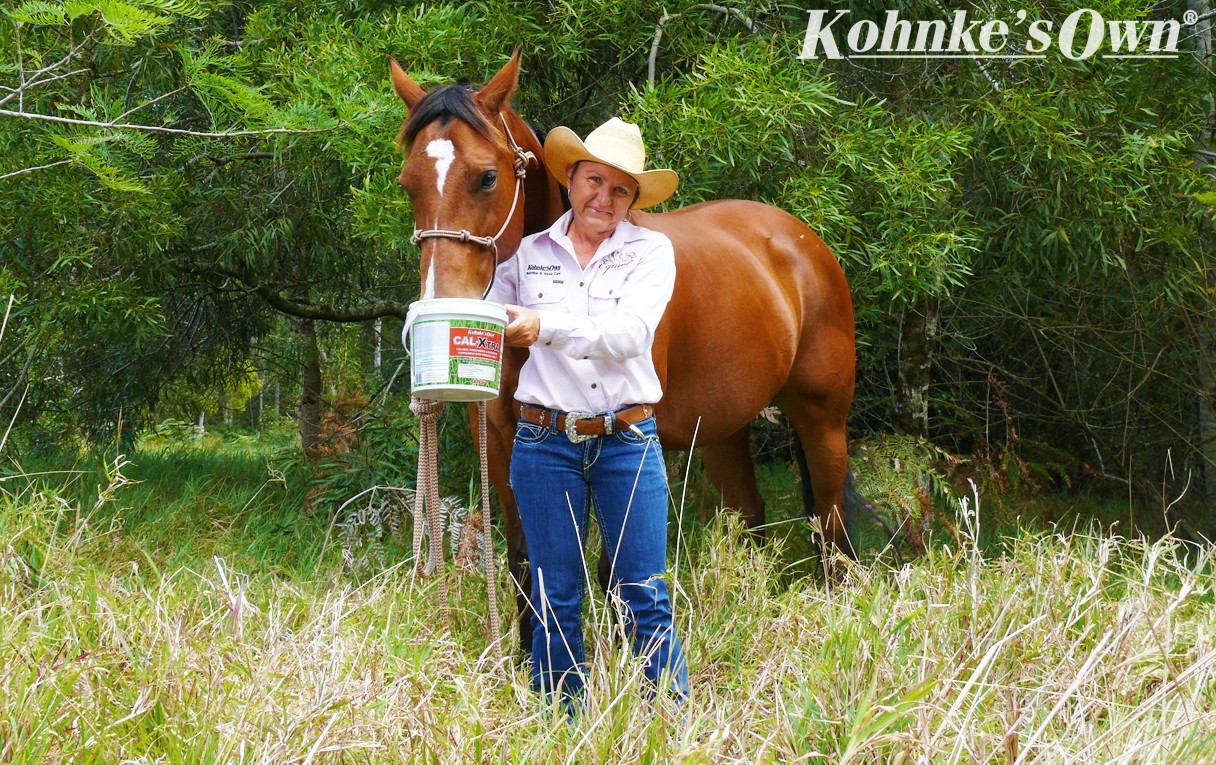
Tropical Grasses can be a Cause of Bone Weakness in Horses
Oxalates are chemicals produced by warm season sub-tropical and tropical grass species (also referred to as C4 type grasses). The oxalate chemicals reduce the calcium available from the grass because they prevent calcium uptake and absorption in the small intestine of horses. When horses cannot properly absorb calcium from their diet, it leads to a calcium deficiency which triggers bone demineralisation. As calcium is particularly required for structural soundness of bones, reduced calcium uptake causes bone weakness problems.
Why are some grasses dangerous to horses?
All grass species contain oxalates, however certain grass species, particularly sub-tropical and tropical grasses, have a higher ratio of oxalates to calcium. These include Setaria, Buffel, Pangola, Para Grass, Guinea Grass, Kikuyu, Signal Grass and Green Panic.
Although more abundant in Queensland and the Northern Territory, these grasses, particularly kikuyu, are spreading further down coastal regions of Australia into NSW and Victoria. Some hays, including Teff, may also contain a higher concentration of oxalates.
Traditionally, the most risky seasons are when tropical grasses are rapidly growing such as warmer weather in Spring or Summer, or periods following fertilisers, rain or irrigation. However, bone weakness when horses are grazing these pastures may not been seen immediately, it can take a 4-6 week period before the first signs may be noticed. It is important to note that not all horses experience early signs of skeletal weakness until more serious bone and joint changes develop.
The Australian Government has an information sheet on Grass Pastures for Aussie Horses: Read it here.
Signs of Bone Weakness and ‘Big Head’ in Horses from Tropical Grasses
Early symptoms of bone demineralisation in horses from consuming grass species high in oxalates include intermittent or shifting lameness, failure of young horses to grow adequately to their expected height, clicking joints or weakness in the stifle and pelvis causing altered movement. Some horses may also exhibit poor hoof growth or quality. More severely affected older horses will often have loose teeth and inability to chew food, or ‘slobber’ when eating.
More advanced signs include fracture of pelvic bones, ribs and splint bones, spinal column collapse and hind-limb in-coordination. ‘Big Head’ (Nutritional Secondary Hyperparathyroidism, NSH) is identified by classic swollen forehead, nasal and upper jaw bones, sometimes with noisy breathing or nasal discharge. Big Head is caused by bone weakness that allows the contents of the head to distort the softer and less dense facial bones.
If you suspect that your horse may have osteoporosis, bone demineralisation or ‘Big Head’ from consuming oxalate-containing grasses, it is important to consult your veterinarian.
How to Help your Horse avoid ‘Big Head’
Giving a high quality, specially formulated calcium and bone mineral supplement provides extra calcium to your horse to replace that which is lost from oxalate containing grasses. This is an important way to help prevent bone weakness, fractures and Big Head syndrome. Shifting lameness issues or even Big Head can be managed and further degeneration of bone health halted by supplementation with bone minerals such as calcium, phosphorus, magnesium and vitamins A and D.
Calcium Supplementation: Important Facts
The type of calcium supplement provided is important, mineral lick blocks are popular but only supply a ‘hit and miss’ nature of supplementing. Other horse owners add DCP or Ag-lime® to their horse’s feed, but these products do not satisfy all the bone minerals needed by horses and can be unpalatable to picky eaters.
Some bone formulas have multiple trace-minerals and other ingredients, which may seem attractive to horse owners looking for an ‘all in one’ supplement. Unfortunately, trace-minerals such as copper, zinc, selenium and iron are poorly absorbed from a supplement which is high in calcium. It is much more effective to supplement most trace-minerals and vitamins according to the exercise level of the horse.
Some ‘Big Head’ or bone supplements use chelated calcium but Kohnke’s Own has extensive experience with chelated minerals and we’ve found that there is no benefit to calcium chelation, it simply makes the supplement more unpalatable and expensive.
Kohnke’s Own Cal-XTRA for Horses Grazing Tropical Grasses

Kohnke’s Own Cal-XTRA is a higher potency and more palatable form of calcium which equine veterinarian and authority in horse nutrition, Dr. John Kohnke, has field trialled and researched for 12 years extensively in cases of calcium deficiency and Big Head.
Cal-XTRA is a specific calcium and bone mineral supplement formulated for horses grazing oxalate containing grasses. It is recommended to be added to feed for horses in regions that include QLD, NT and coastal areas of northern and central NSW and Victoria where tropical grasses are dominant.
Cal-XTRA provides a palatable source of calcium, phosphorus, magnesium, as well as Vitamins A and D which support calcium absorption and utilisation. It is specially designed to reduce oxalate binding to calcium.
Horse owners have been successfully using Cal-XTRA for many years to prevent skeletal problems and Big Head in their horses. Cal-XTRA is very economical and can be combined any comprehensive ration balancing supplement from the Kohnke’s Own range.
